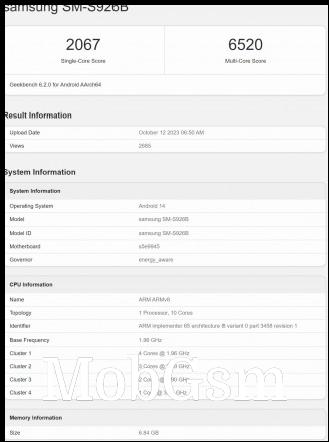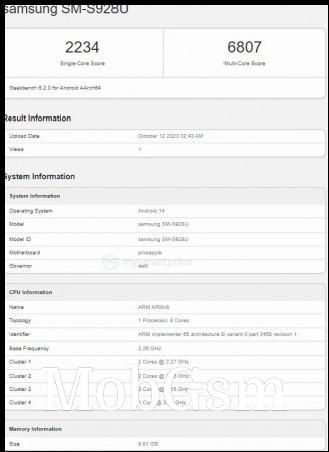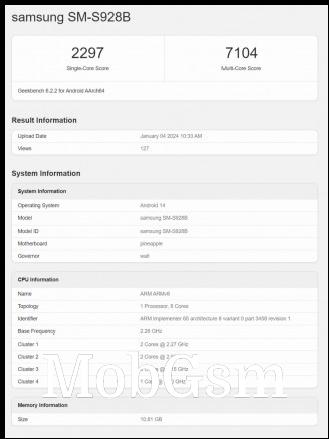Latest Geekbench results show the Exynos 2400 is closing the gap to the Snapdragon 8 Gen 3

While it’s not official yet, the expectations for the Galaxy S24 Ultra are that it will use the Snapdragon 8 Gen 3 chipset exclusively, while the Galaxy S24 and S24+ will use the Exynos 2400 in most regions. How do these two chips compare? Well, early results showed that the Qualcomm chip is faster than the Samsung one in terms of CPU.
However, new results have surfaced on Geekbench and it looks like the Exynos is closing the gap. Here are early results Galaxy S24+ with Exynos 2400 and Galaxy S24 Ultra with Snapdragon 8 Gen 3:


Early results: S24+ with Exynos 2400 • S24 Ultra with Snapdragon 8 Gen 3
And here are results from the same models from earlier today:


Recent results: S24+ with Exynos 2400 • S24 Ultra with Snapdragon 8 Gen 3
The Snapdragon still has the lead, but the it’s smaller than before in both single-core and multi-core tests. The difference fell from 8%/4% to 5%/3% in single/multi-core tests.
At this point thermals and efficiency will be much more important. Can these two chips sustain their performance? How much power do they use when going full throttle? We will find out come review time.
And it’s almost here, early buyers will probably have a Galaxy S24 phone in their hands by the end of the month – the phones will be unveiled on the 17th and Samsung usually does two weeks of pre-orders after the Unpacked event.
We don’t know the complete hardware details for the two chipsets, but from what we know currently (from both official and unofficial sources), their CPU clusters look like this:
| Snapdragon 8 Gen 3 | Exynos 2400 | |
|---|---|---|
| Prime | Cortex-X4 @ 3.3GHz | 1x Cortex-X4 @ 3.1GHz |
| Big | 3x Cortex-A720 3.2GHz | 2x Cortex-A720 @ 2.9GHz |
| Mid | 2x Cortex-A720 @ 3.0GHz | 3x Cortex-A720 @ 2.6GHz |
| Small | 2x Cortex-A520 @ 2.3GHz | 4x Cortex-A520 @ 1.8GHz |










